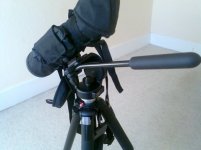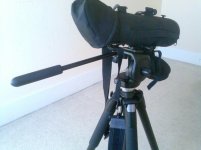Chris B.
Well-known member
I've been a photographer for over 35 years and so have several tripods and ball heads of various sizes to accommodate my photo gear which include DSLRs and a 400mm lens. I'll be purchasing a scope for digiscoping within the next few months, probably a Nikon 82ED, and although I know I can use one of my tripods, is there a major advantage to using a fluid head as opposed to one of my ball heads?
Chris
Chris







